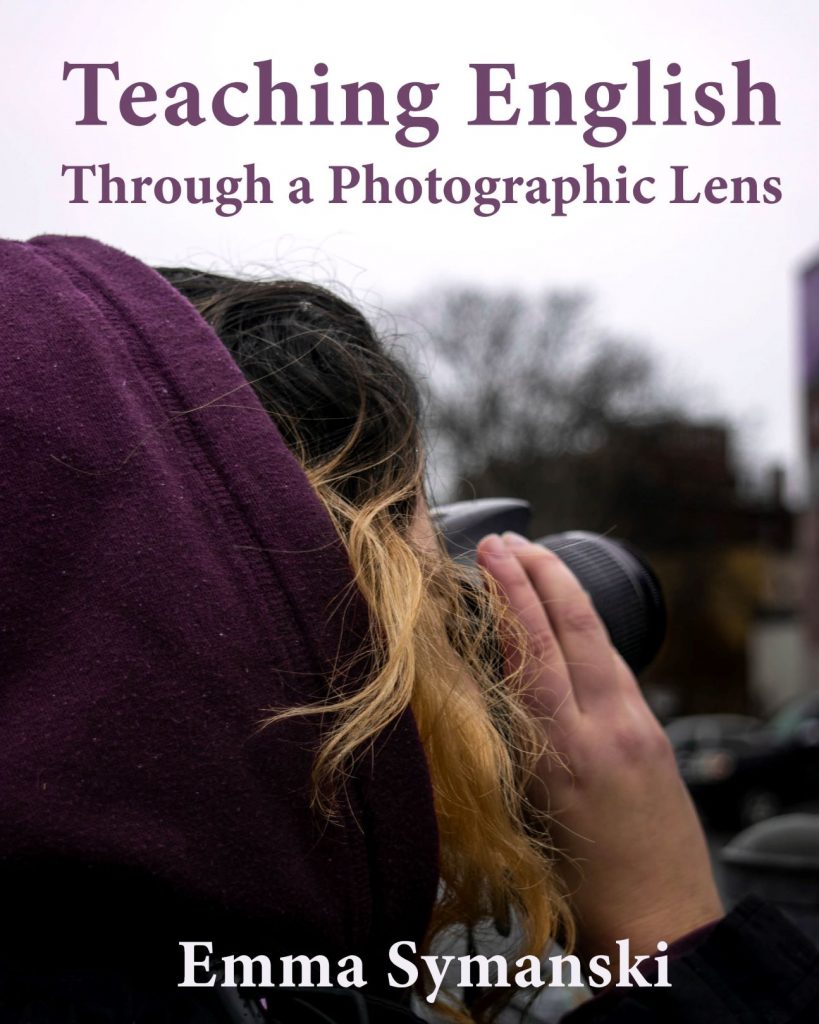Using pictures to teach language
By Eric House
TESOL certificate inspires photography book that connects language to daily life
April 27th, 2022 | Alumni, School for International Training

When Emma Symanski entered Hampshire College in 2017, she had no interest in teaching English. Little did she know, a suggestion to complete SIT Graduate Institute’s TESOL certificate would transform her undergraduate studies—and lead to the publication of her book, Teaching English Through a Photographic Lens.
Like countless undergraduate students before her, Symanski felt pulled in a million different academic directions. An avid photographer, she enrolled in a photography course, though she still wasn’t sure exactly what she wanted to do for a career. She also signed up for a Spanish class to strengthen her language skills. When Symanski’s Spanish professor recommended she consider pursuing SIT’s TESOL certificate, she was surprised. It wasn’t anything she had thought about doing.
I was looking for that common thread, a way of storytelling and communicating. They’re both like language—photography is really another kind of language.
World Learning offers the SIT TESOL certificate in locations around the world. One is the International Language Institute of Massachusetts (ILI), which provides language education at Hampshire College and the surrounding community. Symanski researched the program and quickly became captivated by the student testimonial videos she discovered online. She decided to go for it.
“It completely informed the whole rest of the path of my college experience—it ended up just being amazing,” says Symanski, who ultimately completed SIT’s TESOL certificate during the fall semester of her second year of college. “I’m so thankful that I took that leap because it was more than learning the different [TESOL] frameworks. I viewed the way that I had been taught my whole life differently after it.”
Symanski’s TESOL experience led to her Division-III project, Hampshire College’s equivalent of a senior thesis: a self-designed course on using photography as a tool for learning English.
Reflecting on how she found such a love for teaching language learners when she originally thought that photography was her sole passion, Symanski realizes, “I was looking for that common thread: a way of storytelling and communicating. They’re both like language—photography is really another kind of language.”
Sharing something personal like a photo of family or a special place made it easier for the students to speak in a different language.
What she learned during the TESOL certificate course was crucial for the design of her class and provided her with the necessary tools to succeed —like the idea of frameworks, which was a cornerstone of her TESOL certificate experience. Frameworks provide a template for teaching a specific skill—like listening, reading, writing, or speaking—and center the importance of reflection.
“It was so nice to have all the resources I gained throughout the course. I directly referred to many of the different example lessons that we went through,” she says. “It was very helpful.”
As she prepared to teach her course, it was vital to develop a sense of trust with her students. To do that, she interviewed her students and photographed them. This initial step was essential for her getting to know each person in depth and hearing their background. There were opportunities for the students to share different parts of their lives throughout the class—the photography facilitated this.
“Not only was I able to hear individual stories, but they were able to share them with each other. They used their photos—having that visual element, too—to learn about each other. There was no pressure,” she says. “Sharing something personal like a photo of family or a special place made it easier for the students to speak in a different language. When you include photography in language learning, it becomes something you’re actually passionate about. Sharing something personal like a photo of family or a special place made it easier for the students to speak in a different language, not just some other activity.”
This community was further shaped by the larger purpose of the class—working together to create a gallery showcase.
“All of the students knew right away that throughout the class they were going to be creating this thing together, and each person would be doing their thing individually, but then it would come together to be this really cool gallery. That also helped create this larger sense of community—being able to contribute was more than just for that moment—it was also going to lead to this bigger outcome,” she says.
Unfortunately, due to COVID-19, the initial plans for the gallery were scrapped. Instead, Symanski worked with her advisors to find another way to capture the course and the community built with it. One of her advisors was a photographer specializing in photo books, and the idea to create a book resulted in Teaching English Through a Photographic Lens.
The book uses photography as a tool for taking language out of the abstract, connecting it to the personal and day-to-day life, and creating a sense of understanding and trust.
Equipped with a new set of teaching tools, a strong community, and a book that documents the process, Symanski graduated in 2020 and moved from the Hampshire College area. While she would love to have the gallery show take place now, she knows that it would likely be different than initially planned. However, she remains connected with her students, some of whom are still practicing photography and other art projects.
Since graduating, she spent some time traveling and continues teaching and developing art and music projects while working at her local coffee shop and managing their social media. “I do it all! I’ll always have something in the works,” she says.
Stay up to date with Emma’s photo projects by following her on Instagram at @emmasymanski. Click here to learn more about Teaching English through a Photographic Lens and support Emma’s work by purchasing the book.
